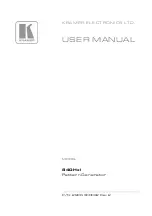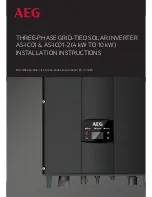
SIEPCYEUOQ2V01A Q2V Technical Manual
299
Item
Specification
V/f Characteristics
Select from 15 pre-defined V/f patterns, or a user-set V/f pattern.
Main Control
Functions
Feed Forward Control, Restart After Momentary Power Loss, Speed Search, Overtorque Detection, Torque Limit, 17 Step Speed (max.), Accel/Decel
Switch, S-curve Acceleration/Deceleration, 3-wire Sequence, Auto-Tuning (Rotational and Stationary), Dwell Function, Cooling Fan ON/OFF Switch,
Slip Compensation, Torque Compensation, Frequency Jump, Upper/Lower Limits for Frequency Reference, DC Injection Braking at Start and Stop,
Overexcitation Braking, High Slip Braking, PID Control (with Sleep Function), Energy Saving Control, Modbus Communications (RS-485 max, 115.2
kbps), Auto Restart, Application Presets, Q2pack (customized functions), Parameter Backup Function, Online Tuning, KEB, Overexcitation
Deceleration, Overvoltage Suppression, High Frequency Injection, etc.
Table 10.9 Protection Functions
Item
Specification
Motor Protection
Electronic thermal overload protection
Momentary
Overcurrent
Protection
Drive stops when the output current is more than 200% of the HD output current.
Note:
Standard value is 200%. Different capacity drives have different values.
Overload Protection
Drive stops when the output current is more than these overload tolerances:
•
HD: 150% of the rated output current for 60 seconds. The permitted frequency of overload is once every 10 minutes.
•
ND: 110% of the rated output current for 60 seconds. The permitted frequency of overload is once every 10 minutes.
Note:
If output frequency < 6 Hz, the drive can trigger the overload protection function when the output current is in the overload tolerance range.
Overvoltage
Protection
200 V class: Stops when the DC bus voltage is more than approximately 410 V
400 V class: Stops when the DC bus voltage is more than approximately 820 V
Undervoltage
Protection
Three-phase 200 V class: Stops when the DC bus voltage decreases to less than approximately 190 V
Single-phase 200 V class: Stops when the DC bus voltage decreases to less than approximately 160 V
Three-phase 400 V class: Stops when the DC bus voltage decreases to less than approximately 380 V
Momentary Power
Loss Ride-thru
Stops when power loss is longer than 15 ms and continues operation if power loss is shorter than 2 s (depending on parameter settings).
Note:
•
Stop time may be shortened depending on the load and motor speed.
•
Drive capacity will change the continuous operation time. A Momentary Power Loss Recovery Unit is necessary to continue operation through a 2 s
power loss on models 2001 to 2042 and 4001 to 4023.
Heatsink Overheat
Protection
Thermistor
Braking Resistor
Overheat Protection
Overheat detection for braking resistor (optional ERF-type, 3% ED)
Stall Prevention
Stall prevention is available during acceleration, deceleration, and during run.
Ground Fault
Protection
Electronic circuit protection
Note:
This protection detects ground faults during run. The drive will not provide protection when:
•
There is a low-resistance ground fault for the motor cable or terminal block
•
Energizing the drive when there is a ground fault.
DC Bus Charge LED Charge LED illuminates when DC bus voltage is more than 50 V.
Table 10.10 Environment
Item
Specification
Area of Use
Indoors
Power Supply
Overcurrent Category III
Ambient
Temperature Setting
IP20/UL Open Type: -10°C to +50 °C (14 °F to 122 °F)
IP20/UL Type 1: -10 °C to +40 °C (14 °F to 104 °F)
•
When installing the drive in an enclosure, use a cooling fan or air conditioner to keep the internal air temperature in the permitted range.
•
Do not let the drive freeze.
Humidity
95% RH or less
Do not let condensation form on the drive.
Storage Temperature -20 °C to +70 °C (-4 °F to +158 °F) (short-term temperature during transportation)
Surrounding Area
Pollution degree 2 or less
Install the drive in an area without:
•
Oil mist, corrosive or flammable gas, or dust
•
Metal powder, oil, water, or other unwanted materials
•
Radioactive materials or flammable materials, including wood
•
Harmful gas or fluids
•
Salt
•
Direct sunlight
Summary of Contents for Q2V Series
Page 2: ...This Page Intentionally Blank 2 SIEPCYEUOQ2V01A Q2V Technical Manual...
Page 12: ...12 SIEPCYEUOQ2V01A Q2V Technical Manual...
Page 18: ...i 2 Legal Information 18 SIEPCYEUOQ2V01A Q2V Technical Manual...
Page 26: ...1 2 Features and Advantages of Control Methods 26 SIEPCYEUOQ2V01A Q2V Technical Manual...
Page 38: ...2 8 Installation Methods 38 SIEPCYEUOQ2V01A Q2V Technical Manual...
Page 70: ...3 3 Main Circuit Wiring 70 SIEPCYEUOQ2V01A Q2V Technical Manual Models B006 B012...
Page 102: ...3 17 Motor Application Precautions 102 SIEPCYEUOQ2V01A Q2V Technical Manual...
Page 138: ...4 12 Test Run Checklist 138 SIEPCYEUOQ2V01A Q2V Technical Manual...
Page 144: ...5 2 European Standards 144 SIEPCYEUOQ2V01A Q2V Technical Manual...
Page 145: ...Standards Compliance 5 5 2 European Standards SIEPCYEUOQ2V01A Q2V Technical Manual 145...
Page 146: ...5 2 European Standards 146 SIEPCYEUOQ2V01A Q2V Technical Manual...
Page 266: ...7 10 Troubleshooting Without Fault Display 266 SIEPCYEUOQ2V01A Q2V Technical Manual...
Page 284: ...8 6 Storage Guidelines 284 SIEPCYEUOQ2V01A Q2V Technical Manual...
Page 312: ...10 10 Peripheral Devices and Options 312 SIEPCYEUOQ2V01A Q2V Technical Manual...
Page 430: ...11 21 Parameters Changed by PM Motor Code Selection 430 SIEPCYEUOQ2V01A Q2V Technical Manual...
Page 731: ...SIEPCYEUOQ2V01A Q2V Technical Manual 731 Z Z pulse Auto Tuning 125...
















































